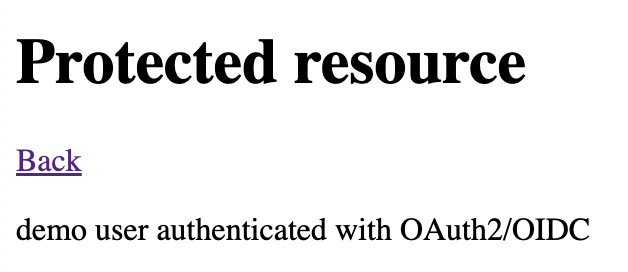OpenAM and Spring Boot 3 Integration via OIDC OAuth2 Protocol - OpenIdentityPlatform/OpenAM GitHub Wiki
There are several ways to integrate Spring application with OpenAM. In the following tutorial, we will integrate Spring Application with OpenAM using the OIDC/OAuth2 protocol.
If you have not installed OpenAM yet, you could run OpenAM as a Docker image. Let’s assume the OpenAM instance URL is http://openam.example.org:8080/openam
Go to the target realm and in the Common Tasks section. Open OpenAM console in a browser and create OAuth2 Provider. Press the Configure OAuth Provider button, and then the Configure OpenID Connect button.
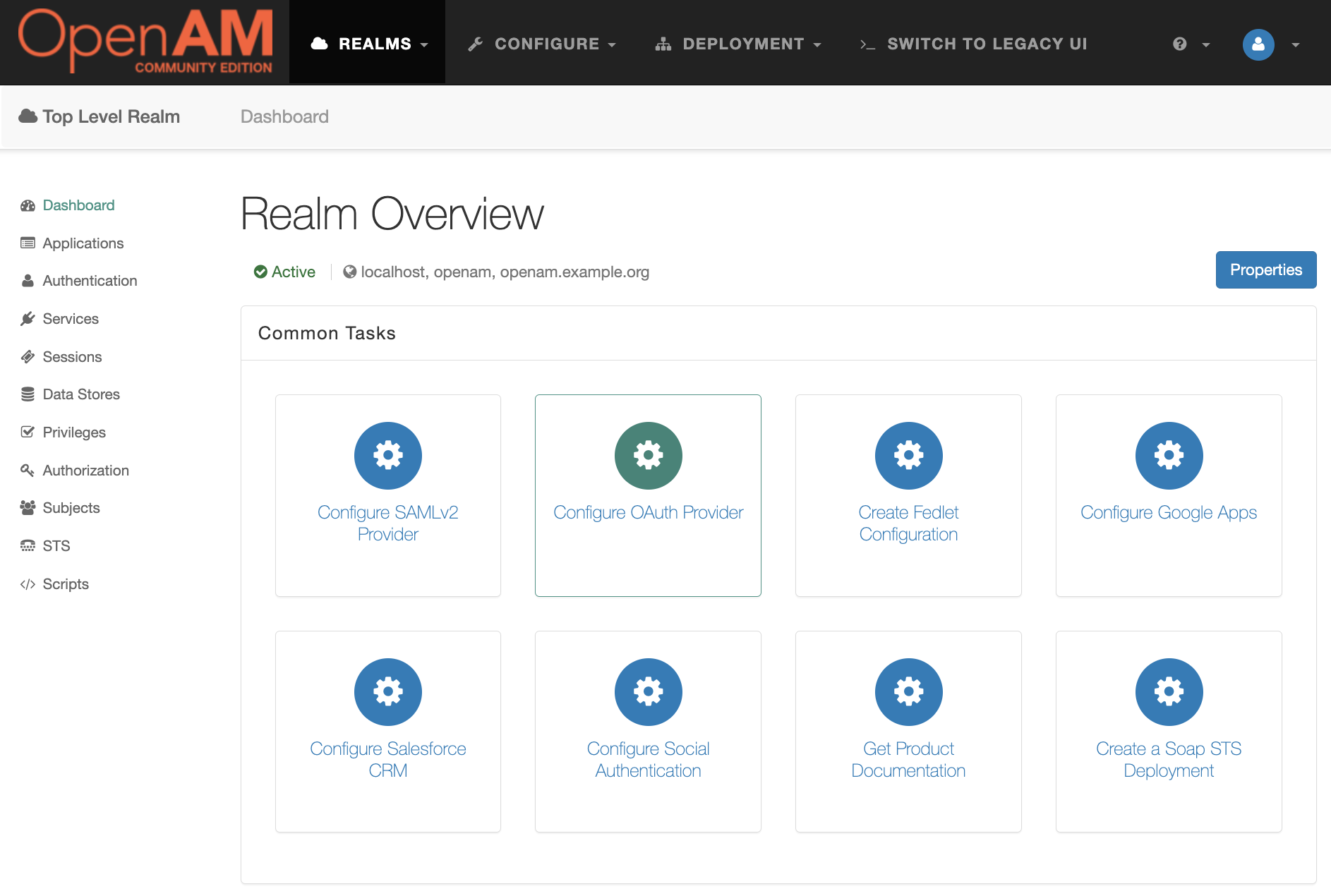
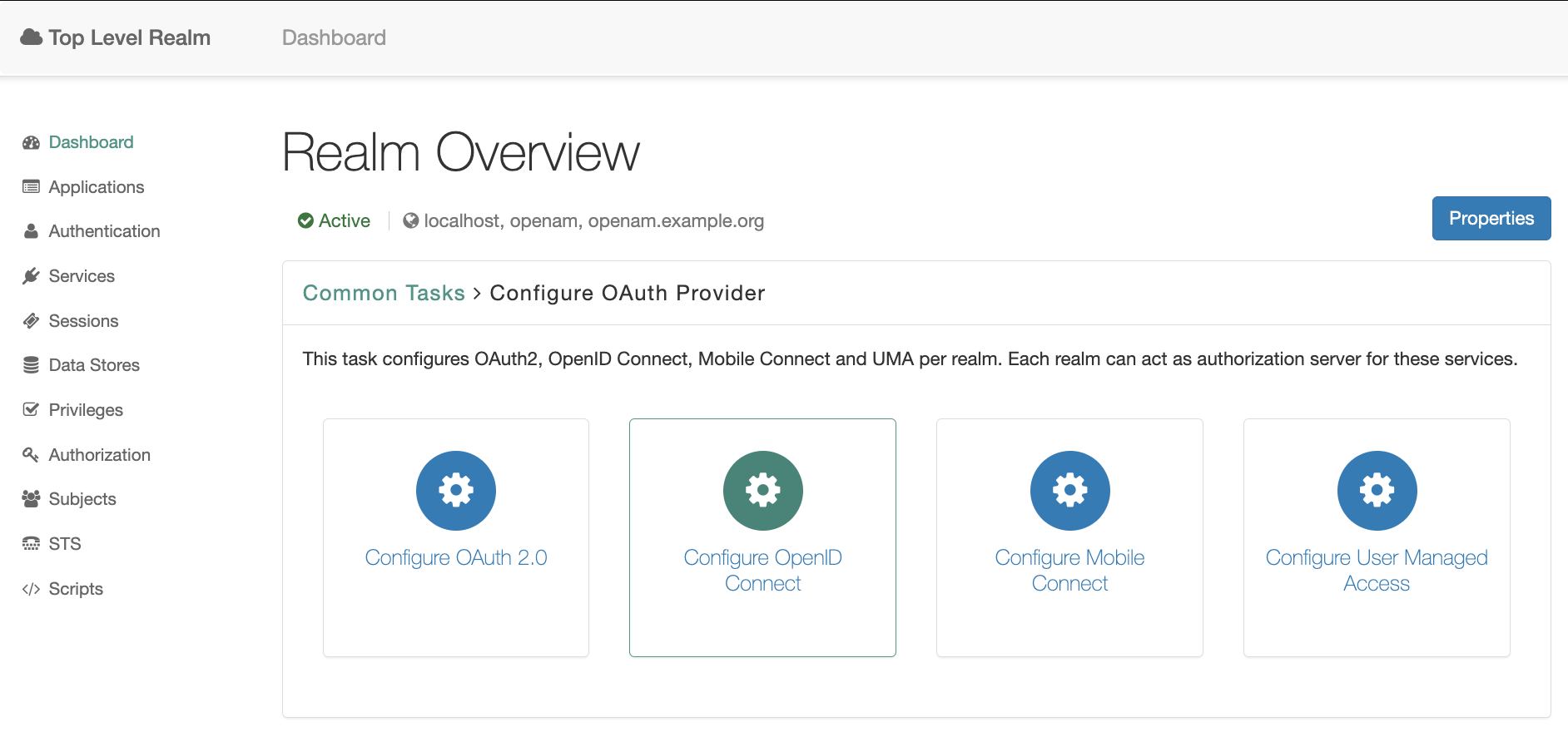
Ajust the required setting and press the Create button.
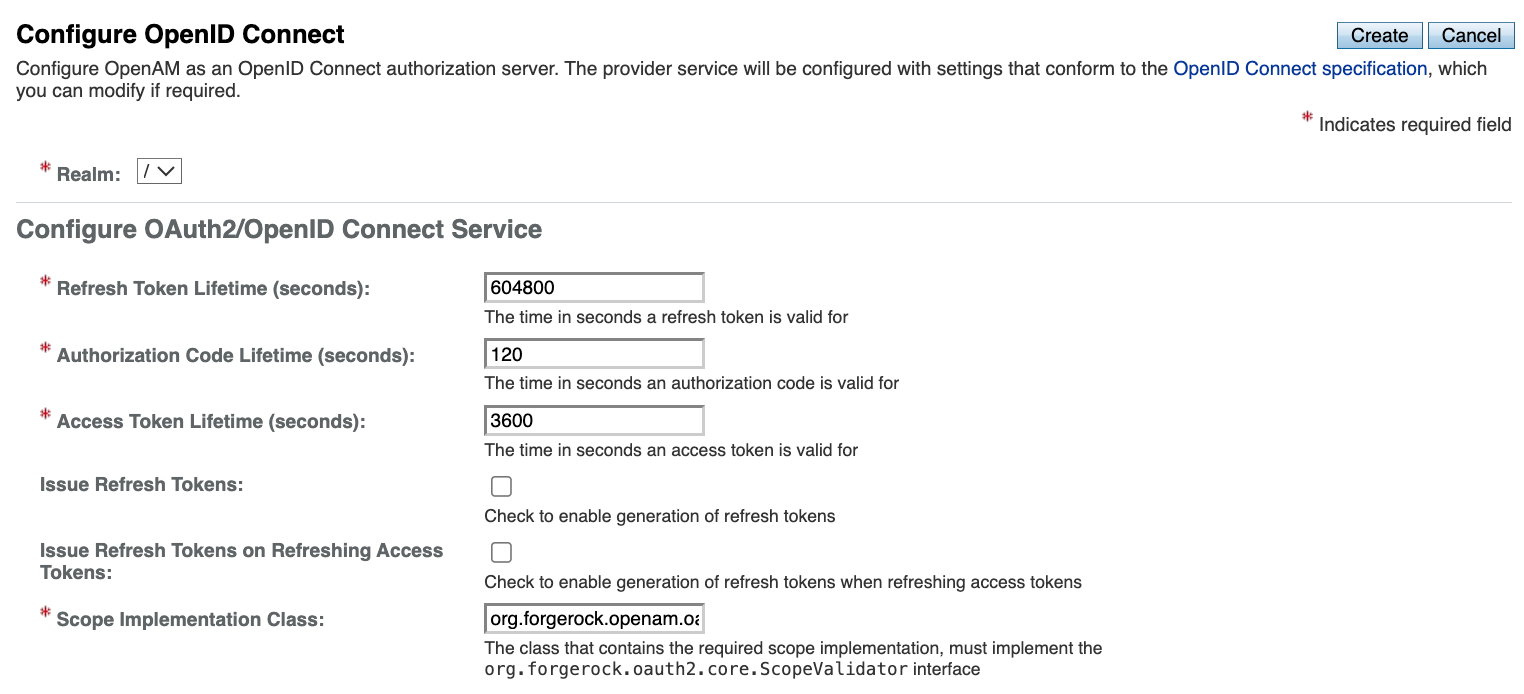
Go back to the realm and select in the realm’s dashboard Applications → OAuth 2.0 in the right menu.

Create a new Agent, set name (client id) and password (client secret) and press the Next button. Go to the new created agent and set the following settings
- Add
http://localhost:8081/login/oauth2/code/openamto Redirection URIs values (is will be our Spring Security application code endpoint) - Add
profileandopenidvalues to Scope(s) - Set ID Token Signing Algorithm setting to RS256.
Create a new Spring Boot application and add the following Maven dependencies.
<dependency>
<groupId>org.springframework.boot</groupId>
<artifactId>spring-boot-starter-thymeleaf</artifactId>
</dependency>
<dependency>
<groupId>org.springframework.boot</groupId>
<artifactId>spring-boot-starter-web</artifactId>
</dependency>
<!--security dependencies-->
<dependency>
<groupId>org.springframework.boot</groupId>
<artifactId>spring-boot-starter-security</artifactId>
</dependency>
<dependency>
<groupId>org.springframework.boot</groupId>
<artifactId>spring-boot-starter-oauth2-client</artifactId>
</dependency>Create a controller and two endpoints: index and protected-oauth. The index endpoint will be accessible for anyone and protected-oauth endpoint will be accessible for authenticated with OpenAM users via OIDC protocol.
@Controller
public class SampleController {
@GetMapping
public String index() {
return "index";
}
@GetMapping("/oauth")
public String oauthProtected(HttpServletRequest request, Model model) {
Principal token = request.getUserPrincipal();
model.addAttribute("userName", token.getName());
model.addAttribute("method", "OAuth2/OIDC");
return "protected";
}
}Create the following templates for controllers:
index.html
<!DOCTYPE html>
<html>
<body>
<h1>OpenAM Spring Security Integration</h1>
<h2>Test Authentication</h2>
<ul>
<li><a href="/protected-oauth">OAuth2/OIDC</a></li>
</ul>
</body>
</html>protected.html
<!DOCTYPE html>
<html xmlns:th="http://www.thymeleaf.org">
<body>
<h1>Protected resource</h1>
<a href="/">Back</a></li>
<p><span th:text="${userName}"/> user authenticated with <span th:text="${method}"/></p>
</body>
</html>Create Spring Security configuration
@Configuration
@EnableWebSecurity
public class SecurityConfiguration {
@Bean
public SecurityFilterChain securityWebFilterChain(HttpSecurity http) throws Exception {
http.authorizeHttpRequests((authorize) -> authorize.requestMatchers("/", "/oauth2/**")
.permitAll()
.requestMatchers("/protected-oauth").authenticated())
.oauth2Login(Customizer.withDefaults()).oauth2Client(Customizer.withDefaults()
);
return http.build();
}
}Add the following settings to the application.yml file:
server:
port: 8081
spring:
security:
oauth2:
client:
registration:
openam:
authorization-grant-type: authorization_code
client-id: test_client
client-secret: changeme
scope:
- openid
- profile
provider:
openam:
authorization-uri: http://openam.example.org:8080/openam/oauth2/authorize
token-uri: http://openam.example.org:8080/openam/oauth2/access_token
user-name-attribute: sub
issuer-uri: http://openam.example.org:8080/openam/oauth2Logout form OpenAM if you are logged in.
Run the Spring application an open its URL in a browser: http://localhost:8081

Click on the OAuth2/OIDC navigation link, and you will be redirected to the OpenAM authentication page.
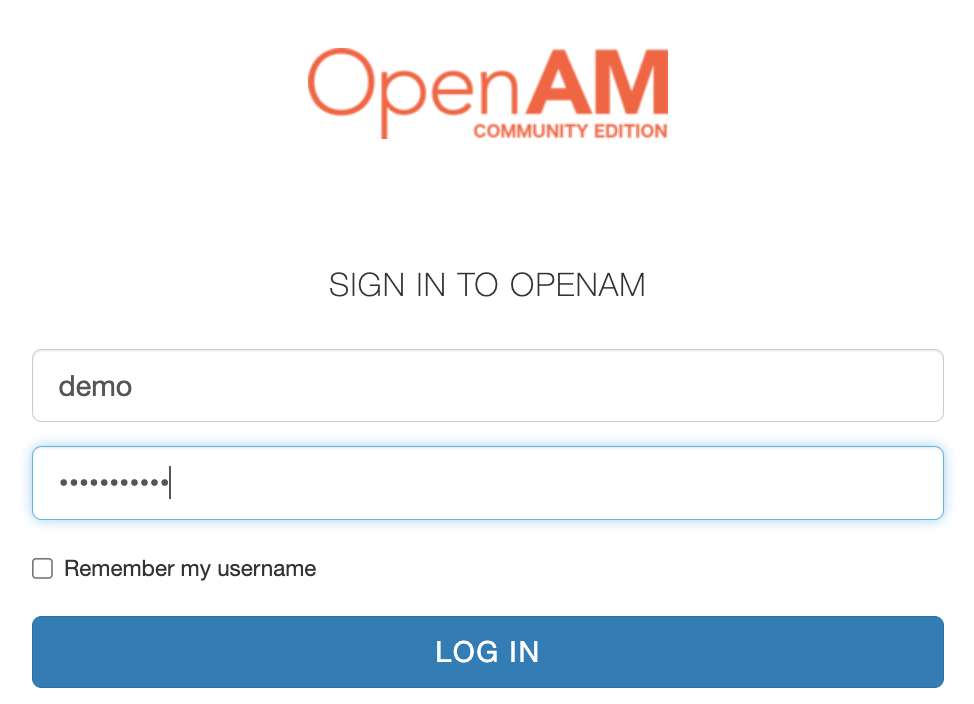
Enter the user’s login and password and then press the LOG IN button.
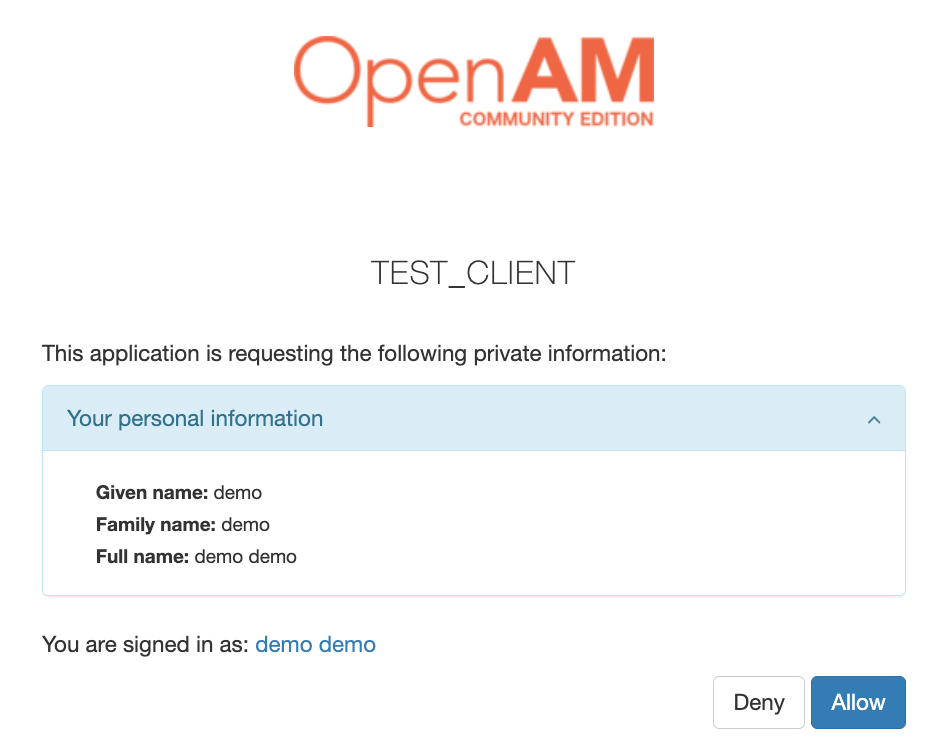
After pressing the Allow button, you will be redirected to the Spring Security Application as an authenticated user.
